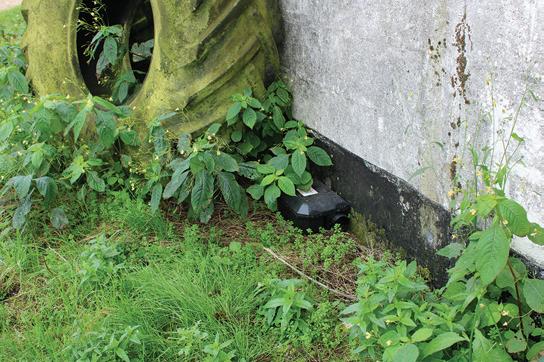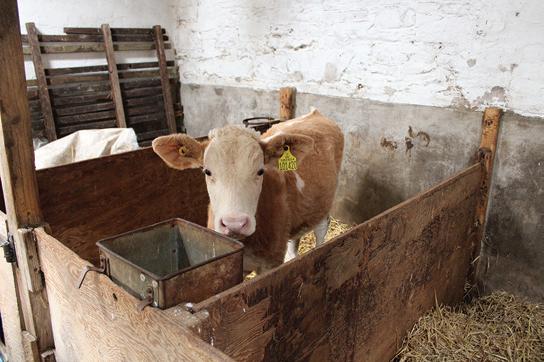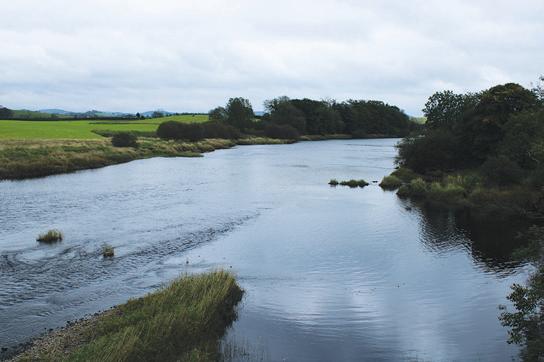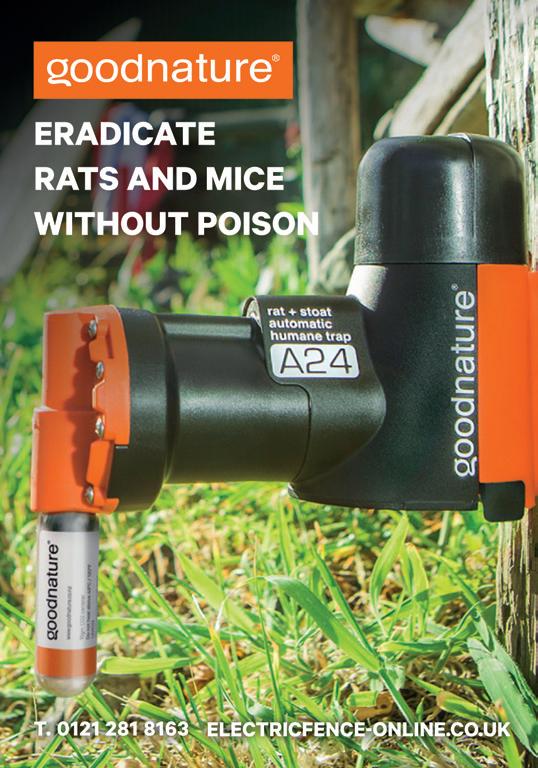
6 minute read
Rodent Control
Spiralling rat numbers controlled using new rodenticide
A Scottish farm was forced to seek help from a professional pest controller when rat numbers spiralled out of control. Rats were seen in large numbers running away from the combine towards the farm’s cow sheds during this year’s harvest. Shortly after, rats were also spotted running across the slurry crust below the slatted foors of the sheds. This confrmed that rats had moved onto the farm and it now had an infestation.
Advertisement
James Milligan farms at Culvennan Farm near Castle Douglas. The 200-acre farm is largely cereals with some grazing for heifers, which are sold on. “I farm in partnership with my brother Andrew and father Michael. We have chosen to focus on arable and don’t milk here anymore, but we have retained the sheds for sucklers and heifers which we sell on,” he explains. James further explains that the farm has had problems with rats in the past and that he has brought in the help of local pest controller John Galloway of South West Pest Control before. “John has been working with us for nearly twenty years but in the last few years rat numbers have increased and he has been spending more time trying to control them,” he says.
Pest controller, John Galloway, has successfully controlled rats at Culvennan Farm using Storm Ultra Secure®
John Galloway has been a pest controller for 26 years. Now 68, he is looking to retire, but is able to refect on the problems he has had with rats locally. “Culvennan Farm is like so many in this area. Nobody wants to think they have a rat problem, but if left alone rats can breed so quickly that their numbers can be uncontrollable for farmers,” he says. “The area near Castle Douglas is perfect for rats. The river acts like a motorway. The rats come up the banks to feed in the felds, like visiting a service station. When the crops are harvested and the temperature begins to drop, the rats seek shelter in farm buildings and that’s when the problems start,” he adds.
Culvennan Farm is close to the River Dee, situated in an area with a network of ditches and banks around rich arable land that make it an easy target for rats. In more recent years Mr Galloway has found controlling rat numbers more challenging. “Last year I started with a bromadiolone bait and it had almost no effect. The rats were eating plenty of it, but


Rats were coming up from the banks of the nearby River Dee to feed in the felds and fnd harbourage in farm buildings.

the bait take continued to be high and I recovered very few dead bodies,” he says. He changed to another bait with a different active, difenacoum. “I started to recover dead rats, but the bait take was still high, which meant there were still rats feeding on the bait and I wasn’t reaching a control point,” he says.
John suspected resistance, an issue that has been affecting rodent control in the UK. Some rats have evolved to be resistant to certain anticoagulant baits such as bromadiolone and difenacoum. A resistance map has been created to help rodenticide users select bait based on the likelihood of resistance in their area1. “This year I have chosen to use a bait that contains focoumafen because there is no known resistance to this active,” says Mr Galloway. “Storm Ultra Secure® is a new product manufactured by BASF and this year I have been getting good results with it,” he says.
Storm Ultra Secure is a single feed anticoagulant that is pulse baited. “Single feed baits are effective for farm use because less bait is required and control can be reached in just 14 days,” explains Mr Galloway. The bait is placed in sealed bait boxes that Mr Galloway located on the farm before using any bait. “It is important to establish bait boxes before using bait. This helps prevent a neophobic reaction from rats,” he says. Neophobia is a fear of new objects, which is a survival mechanism rats have to protect them from the unknown. It can delay rats feeding from boxes for a week or two. Therefore, to increase the effcacy of a baiting program, boxes should be positioned ahead of using any bait to allow the rats to accept the boxes as part of their habitat.
“I checked the boxes after the frst pulse on day three and almost all were empty, which was a good sign. I replenished the bait and returned on day seven to fnd that the take had reduced,” he adds. Mr Galloway returned after 14 days to fnd very little bait take in almost all of the boxes. Only one box had a take of over 15 percent. “I am happy that this has controlled the bulk of the infestation. I have removed dead bodies and topped up each box to control any remaining rats. The treatment has been fast and effective, so I will remove the bait in a week and continue to monitor the farm,” says Mr Galloway.
Mr Milligan has spent time cutting back weeds and removing any available habitat that the rats could use to breed. “Working with John has made me more aware of how to minimise the chance of an infestation. I routinely remove rubbish and weeds, but some of our buildings are in need of repair so offer excellent harbourage for rats which is why John has been an important part of controlling the rat numbers here at Culvennan,” he says. “We know that rats are in the felds and that they come up from the river looking for food. I have removed all food and water sources that aren’t essential for the cows, to make the farm as unappealing as possible. This will hopefully keep them at bay,” he adds.
Controlling rodents is becoming more of a challenge, especially as resistance has been recorded in many areas of the UK. “I would always advocate using nontoxic methods to reduce the likelihood of rats trying to seek harbourage on a farm. Proofng buildings by blocking entry points and making sure that areas outside and around buildings are tidy is the least farmers should do to discourage rats on their farms” says Mr Galloway. “Using rodenticides should be a last resort and now, more than ever, it is important to establish whether any resistance has been recorded in the area,” he adds.
A recent study suggested rodent numbers have risen sharply during 2020, due largely to the Covid-19 lockdown. The research was carried out by the British Pest Control Association (BPCA) in the spring. The Covid-19 impact study carried out by the BPCA revealed 51% of pest controllers have reported a rise in rat activity and 41% have reported a rise in mouse activity2. “There is no doubt that rats pose a mounting threat to farmers. Being vigilant, working together and using effective control methods is important if we are going to stay on top of rat numbers,” concludes Mr Galloway.
1. Rodent resistance maps can be found at: https://guide.rrac. info/resistance-maps.html If you suspect that you have resistant rats on your farm then these can be tested free of charge. All it requires is for you to cut the tail off three freshly trapped or shot rats and to pop in the post. Details can be found here https://www.thinkwildlife.org/ downloads/
2. Source: BPCA Covid 19 impact study 20 April 2020.











